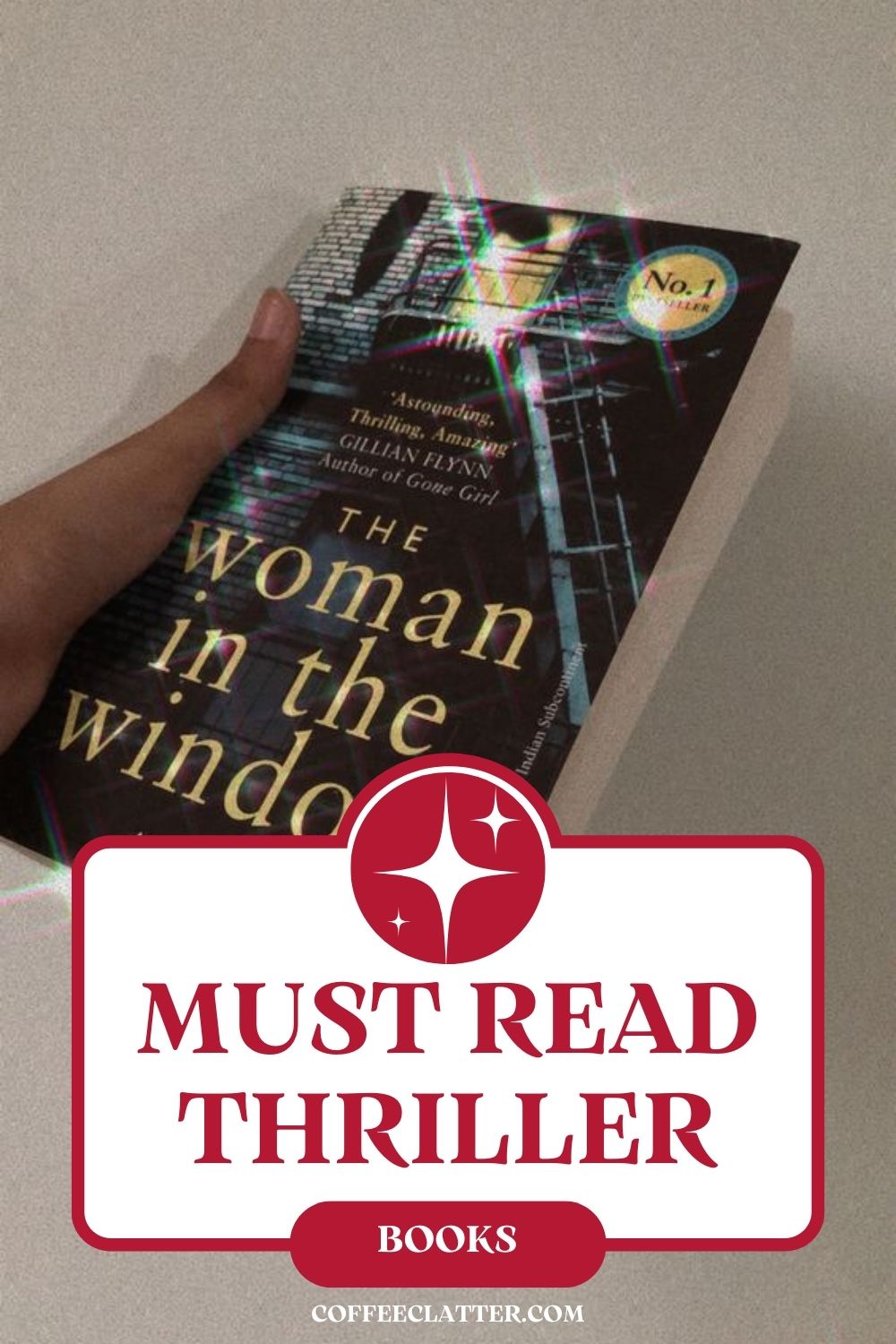Book Summary: ‘The Woman in the Window’ by AJ Finn
The Woman in the Window, crafted by A.J. Finn, takes readers into the depths of a psychological thriller that grips and does not let go. This novel stands out as a suspenseful journey, wreathed in the shadows of agoraphobia and the complexities of the human psyche. It delves into a world where what is seen may not always be believed, where the truth hides just out of view. This piece by Finn has piqued the interest of crime fiction enthusiasts with its blend of nail-biting tension and intricate storytelling.
Meet Anna Fox: The Central Character
Stepping into the world of ‘The Woman in the Window‘, readers find themselves intertwined with the life of Anna Fox, a child psychologist besieged by agoraphobia. After a harrowing event that leaves her unable to venture outside her New York City home, her days are filled with old movies, merlot, and observations of her neighbors. This confinement shapes not just her routine, but the entire fabric of the narrative. Agoraphobia—a palpable force within the novel—ensnares Anna in a mental web, adding layers of complexity to her character. As the central figure, her development propels the story, inviting readers to navigate the churning depths of her psyche.
Anna’s achingly realistic portrayal acts as a beacon for readers, guiding them through the suspense-filled pages. Through her, author A.J. Finn crafts a tale where empathy and engagement are mandatory. As readers witness Anna’s struggles and triumphs, the role of a well-crafted central character becomes clear. She represents the heart of the psychological thriller, a crucial element that binds the audience to the story’s pulse.
Plot Overview: A Glimpse Through the Window
Within the confines of her New York City home, a layer of suspense begins to settle. Anna Fox, a child psychologist, finds herself ensnared in her own mind’s snare due to agoraphobia. She occupies her days with old movies, wine, and the view from her window. It’s through the lens of this window that Anna glimpses what appears to be the perfect family, the Russells, who have just moved in across the street. But one eerie evening, a scream pierces the quiet, and Anna witnesses something she wasn’t meant to see. Her world is thrust into turmoil as she struggles to decipher whether her mind is playing tricks or if the horror she saw was real. This central mystery of what transpired in the Russell household consumes her, compelling her to undertake an investigation fraught with psychological tension and shocking discoveries. Each revelation entices the reader, hinting at the darker patches of truth that lie obscured in the shadows of Anna’s reality.
Themes and Motifs: Beyond the Glass Pane
In The Woman in the Window, the theme of isolation stands as a towering wall around Anna Fox’s existence. She remains confined within her own home, a self-imposed exile from the outside world. This seclusion is not just physical; it serves as a poignant echo of her internal detachment from life. The book delves into voyeurism through Anna’s eyes. Her lens onto the world is the pane of her window, through which she observes her neighbors. You experience the raw edges of her reality becoming blurred, where watching becomes an obsession.
Reality versus perception forms the book’s intricate web, ensnaring readers in a complex dance of doubt and truth. Anna’s perceptions are tinged with the haze of medication and wine, challenging you to question what is real. These themes amplify the tension knotting the narrative, inviting you into the psychological labyrinth that A.J. Finn masterfully constructs. Suspense thrives on the uncertainty they foster, heightening the urgency to unravel the veiled secrets of Anna’s cloistered view.
Anna’s Reality: Questioning the Unreliable Narrator
Within ‘The Woman in the Window,’ readers encounter an intriguing yet puzzling narrative perspective due to Anna Fox’s role as an unreliable narrator. This literary device sharpens the book’s edge, entwining readers in a complex web of what’s real and what’s imagined. A.J. Finn uses this trope masterfully, as Anna’s psychological state casts doubt on her accounts. This storytelling approach leads you on an absorbing journey, questioning each detail’s authenticity.
The unreliability of Anna’s viewpoint adds layers to the reading experience. You’re not just passively absorbing events; you’re actively engaging with the narrative to discern truth from misdirection. It charges the atmosphere with palpable suspense, making the turns of the story all the more gripping. Each flicker of uncertainty and second-guessing feeds into the novel’s pulsating heart, securing its place as a psychological thriller of note.
Finn’s strategic use of the unreliable narrator keeps tension on a knife-edge. The uncertainty surrounding Anna challenges you to piece together reality, ensuring that engagement never wanes. It reminds us that our perspective is often clouded, not just in fiction, but also in the windows we peer through in our own lives.

Twists and Turns: Navigating the Narrative
The Woman in the Window grips readers with sudden narrative jolts that skilfully pivot their understanding of events. Key plot twists jerk the storyline into unforeseen territories, invoking a sense of danger and urgency. These surprises amplify the book’s stature as a hallmark of the psychological thriller genre.
Anna Fox’s reality unreels with each twist, where seemingly mundane details cascade into revelations, challenging perceptions. This masterful use of suspense draws you into the depths of the mystery. It’s crucial to tread lightly to avoid spoilers, but know that the book dares you to guess what’s lurking in the shadows, making it impossible to put down.
For readers keen on dissecting a complex narrative, the thoughtful unraveling of Anna’s psyche against the backdrop of plot turns provides ample material for analysis. The unexpected turns not only serve as a propulsive force but also enhance the thematic richness, making it a compelling read for those who relish psychological complexity layered with intrigue.
Critical Reception and Popularity
A.J. Finn’s debut, The Woman in the Window, garnered significant attention from critics and book lovers alike, quickly rising through the ranks to become a favorite among fans of psychological thrillers. The novel’s inclusion in numerous bestseller lists solidified its status within the upper echelons of the mystery genre. Not only did it capture the attention of everyday readers, but it also received nods of approval from industry professionals, earning critical acclaim for its gripping narrative and complex character development.
Several prestigious literary circles recognized the novel, with its psychological intricacy and suspenseful undertones resonating deeply within the reading community. The book’s success can be attributed to Finn’s mastery in weaving an intriguing plot with an unreliable narrator, a combination that keeps readers guessing until the very end. Its exploration of themes like isolation and the thin line between perception and reality has struck a chord with audiences, securing The Woman in the Window as a must-read within contemporary fiction circles.
The Window Closes: Reflecting on Anna’s Journey
Anna Fox’s journey in ‘The Woman in the Window’ ends as more than a tale of suspense; it serves as a mirror to the complexities of human nature. Her character is meticulously crafted, manifesting the depths of agoraphobia and the yearning to connect despite overwhelming fear. This portrayal strikes a chord with those who grapple with psychological barriers, illuminating the battles waged within the confines of the mind. Anna’s narrative weaves the themes of isolation and voyeurism into a powerful testament to the resilience of the human spirit. Her struggle to discern reality from illusion echoes the broader human condition, where perception often clashes with truth. Readers find solace in Anna’s story, seeing their own quests for truth and connection reflected in her binocular-framed glimpses of the world. ‘The Woman in the Window’ leaves its audience pondering the walls they erect around themselves and the windows they peer through in search of authentic human interaction.
From Page to Screen: The Adaptation
Transitioning from the suspenseful pages of The Woman in the Window to a dynamic visual narrative, the book-to-film adaptation has been a topic among fans and critics alike. Adapting a heavily internalized psychological thriller presents its unique challenges, primarily how to visually convey the complexities of Anna’s unreliable psyche. The film attempts to capture the essence of A.J. Finn’s storytelling while inevitably introducing changes to characters and plot points for cinematic effect. Fans are often curious about these variations and how they might alter the tale’s impact.
If you reveled in the twists and turns within the novel’s binds, the movie promises a different lens through which to view Anna’s harrowing tale. Witnessing the characters take shape in the actors’ performances and the story unfold in moving images can enhance the connection to the narrative. It invites you to experience the same story anew, reaffirming the novel’s profound effect on the psychological thriller genre.
Farewell Glance: Parting Thoughts on the Tale
As we draw the curtains on The Woman in the Window, we reflect on the intricate tale spun by A.J. Finn. It’s a narrative that weaves through the dark corridors of the mind, showcasing agoraphobia and the unreliable whispers of perception. This psychological thriller stands out in its genre, laying bare the complexities of its central character, Anna Fox, whose grip on reality keeps readers on a knife-edge.
The discussion doesn’t end here. We invite you to dive into the suspense-filled rooms of your mind and share thoughts on this enigmatic novel. Did Anna’s journey through fear and illusion strike a chord in you? Let’s continue this book discussion, broadening our horizons with recommendations for further reading within the mystery genre. Engage with the reading community as we explore similar works that tantalize our love for literary suspense.








